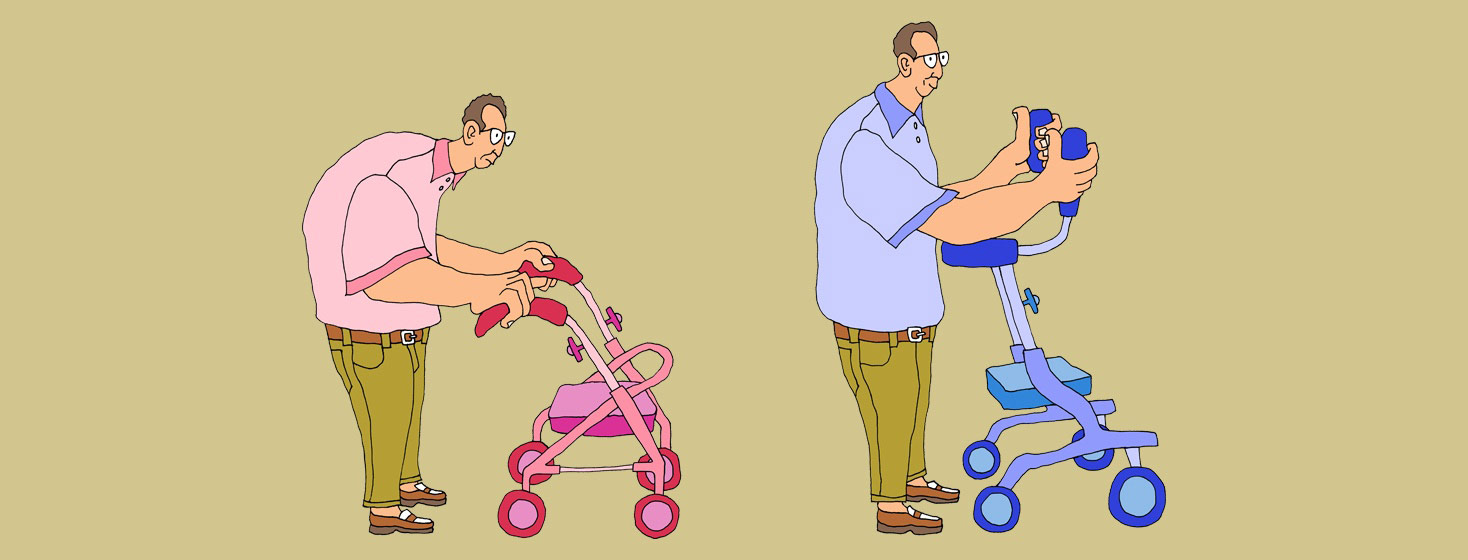Why I Chose An Upright Walker
I am not a prognosticator. I researched all the available products on the market that could assist me with Parkinson's disease (PD) and mobility challenges. I found that traditional walkers and rollators can benefit those with limited mobility and help those who fatigue quickly while walking and completing daily tasks. They’re relatively inexpensive and easy to obtain, making life a lot easier for those who really need them.
While these mobility aids provide many benefits, I also learned that there are some disadvantages to using these devices that can pose a health risk. In addition, once you get used to these devices, you may be at risk of becoming dependent on them.
Poor posture
The design of traditional walkers or rollators require the user to hunch over and roll their shoulders forward as they operate the device. This can lead to poor posture. It can also lead to shoulder neck, and lower back pain, and discomfort.
Bad posture can also impede one's lung capacity and the ability to breathe efficiently. As we age, gravity tends to work against our bodies and it becomes more difficult to avoid these bad habits.2
Downward line of sight
The poor posture that naturally occurs when positioned to use a standard walker or rollator affects your line of sight. Hunched shoulders will point your head, neck, and eyes toward the ground. This can be dangerous since you are not looking where you are going.
My solution
My solution was choosing an upright walker. I was evaluated by a physical therapist prior to my ordering my device. I felt that the upright walker not only met my mobility needs, but it had all the perks of a traditional rollator. The relatively new design helped to resolve my complaints while offering many advantages.
The upright walker was also heavier than most rollators and easier to move. The upright position required me to stand up straight, it reduced fatigue, and provided me with more stability along with overall comfort. By being positioned upright, I am now facing forward with my head up and my eyes focused forward. This has made it easier to navigate obstacles ahead.
The fit of an upright walker
The upright walker requires me to stand up tall and rest my forearms and elbows on raised, padded armrests, as opposed to the wrists at hip level. This upright position keeps my chest and shoulders back and it helps me eliminate poor posture.
Cons to traditional walkers
While these mobility aids provide many benefits to users with decreased or limited maneuverability, there are some disadvantages as well. For me, the downside of using a traditional rollator or walker was my concern that I may become more dependent on them. A traditional rollator also requires the user to lean forward to move in the desired direction. This takes both strength and coordination.
Get evaluated by a physical therapist
For these reasons, it is best to be evaluated by a physical therapist prior to purchasing a mobility device. They can advise you which type of mobility device is best for you.

Join the conversation